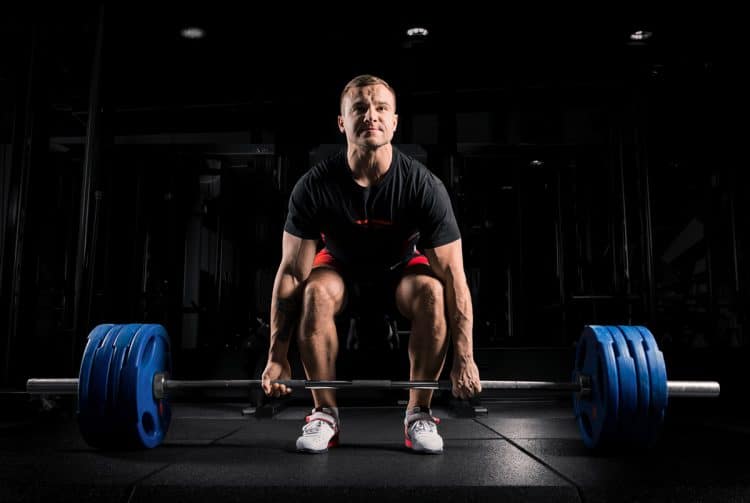Tag: training

10 Exercises for Thicker Forearms
Exercises You Should Be Doing For Thicker Forearms
Forearms are one of the most overlooked muscle groups and don’t get the same love as the biceps. Forearms and biceps symmetry can add to the aesthetics of your body and can make your arms look bigger.
Bodybuilding is a game of delusions and thicker forearms and smaller joints can visually add significant size to your biceps. Before we dive into forearms training, let’s touch on the forearm anatomy for a minute.
Your forearms consist of two main muscle groups, the flexors, and extensors. Flexors are also responsible for pronation and extensors for supination. Flexors are present inside your forearms and extensors are on the outside of your forearms.
Reverse Grip Dumbbell Curls
The normal bicep dumbbell curls work the biceps, while the reverse grip dumbbell curls primarily work the forearms and the outer heads of the biceps. Holding the dumbbells with a monkey grip (thumbs over the handles) makes the movement more taxing on the forearms.
Barbell Wrist Curls
Barbell wrist curls are an isolation exercise and work the forearm flexors. If you don’t have an access to a wrist curl machine at your gym, you can place your forearms on a flat bench with your wrist hanging off the bench. Lower the barbell until your knuckles are facing the floor and your palms should be facing you at the top of the movement.
Reverse Barbell Wrist Curls
Reverse barbell wrist curls are the opposite of the normal wrist curls and work the forearm extensors. Hold the barbell with an overhand monkey grip to completely exhaust your forearms.
Arm Blaster Reverse Barbell Bicep Curls
The arm blaster can annihilate your forearms. Maintaining a strict form is the hardest thing while performing the reverse barbell curls. Using an arm blaster can eliminate the use of momentum. You can also use Fatgripz to recruit every muscle fiber in your forearms.
Barbell Roll Outs/Grip Crushers
The grip crushers will fill your forearms with lactic acid. Lock out your elbows and grab a barbell in front of your quads. Allow your hand to open and the barbell to roll to your fingertips. Return to the starting position and complete a wrist curl.
Farmer’s Walk
Farmer’s walk might look easy but will demand all you’ve left in the tank. Grab a pair of dumbbells you can hold on to for a couple of minutes. Go for a 40-50 yard walk with the dumbbells and at the end of the distance, stop and continue to hold the weights for as long as possible.
Towel Pull-Up
The harder it is for you to hold on to something, the more will be your forearm recruitment. Performing towel pull-ups can take your forearm gains to the next level. Set up a towel on the pull-ups bar and perform the pull-ups until you can’t hold onto the towel anymore.
Zottman Curls
Zottman curls are an overall arm builder. Unlike the textbook barbell and dumbbell curls, the Zottman curls train your forearms as well. Stand holding a dumbbell in each hand with the dumbbells facing your sides. Curl the weights so your palms are facing you at the top of the movement. Turn your palms to face down, and then lower the weights slowly, as in a reverse curl.
Behind the Back Cable Grip Crushers into Wrist Curls
Cables are a great way to maintain a constant tension on your muscles throughout the exercise. Grab a straight bar with your back facing towards the pulley. Open your hands and allow the bar to roll to your fingertips. Return to the starting position and complete a wrist curl at the top of the movement.
Plate Pinch
The plate pinch is a simple exercise which requires a couple of weight plates but will take your forearm gains to the next level. Start with two 10 pound weight plates and pinch them together with one hand. Just like the farmer’s walk, go for a 40-50 yard walk while pinching the plates together and at the end of the distance, stop and continue to hold the weights for as long as possible.
How often do you train your forearms? Let us know in the comments below. Also, be sure to follow Generation Iron on Facebook, Twitter, and Instagram.
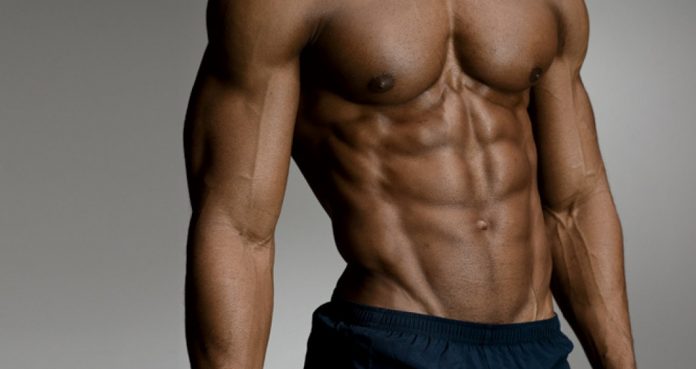
The Most Effective Ab Workout You Can Do at Home
An Ab Workout You Can Do at Your Home
A ripped midsection isn’t easy to get but can make you stand out from the crowd. The good news is, you don’t have to hit a gym in order to train your abs. You can build your abs from the comfort of your home.
Everyone has abs but they are hidden under a layer of fat. Proper diet and training can help in exposing your six-pack. A 15-20 minute ab workout is enough to carve your midriff into a masterpiece.
Lying Leg Raises – 3 Sets 20 Reps
Lying leg raises work your lower abs. Lower abs are the most stubborn fat holding section of your abdominal. If you have an access to a flat bench at your home, you can use it to increase your range of motion.
Lie with your back on the floor, your arms placed on your sides and your legs stretched out. Raise your legs so they’re perpendicular to your upper body. Slowly lower your legs so they’re 2-3 inches away from the ground. Repeat this movement for 20 reps.
Crunches – 3 Reps 30 Reps
We are taking an overall approach to training abs in this workout. Crunches work your upper and middle abs and are one of the most popular abdominal exercises. The high number of reps of this exercise will help in building definition in your midriff.
Lie on an exercise mat with your feet placed flat on the floor. Place your hands behind your head. Some people stretch out their arms and use them to generate momentum which can take off tension from the abs. Lift your upper back off the floor, breathe out and squeeze at the top of the movement. Your lower back should be touching the floor at all times.
Russian Twists – 3 Reps 15 Reps Each Side
Most people overlook training their obliques. Obliques are the fish gill-like muscles present on the sides of your abs. Russian twists are one of the most effective oblique exercises and will help you in building the V-shaped muscle in your lower abs.
Sit on an exercise mat with a slight bend in your knees and feet elevated. Hold a weight (could be a dumbbell or weight plate) in front of your chest. Rotate to your right side, breathe out and squeeze your obliques. Return to the starting position and repeat on the left side.
Reverse Crunches – 3 Sets 20 Reps
Reverse crunches are the opposite of the traditional crunches. In this exercise, you work your lower body as compared to your upper body in the traditional crunches. Reverse crunches work your lower abs.
Lie with your back on the exercise mat, arms on your sides and feet placed flat on the floor. Lift your feet off the floor and bring your knees to your chest. Hold your knees close to your chest for a second before returning to the starting position.
Planks – 3 Sets 1, 1.5, 2 Minutes Each
Planks have earned a name for themselves when it comes to core and ab training. Performing planks can strengthen your core which can help you in performing other exercises better, especially compound movements.
Place your forearms on the ground with your elbows aligned below the shoulders. Your arms should be parallel to your body at about shoulder-width distance. Perform the first set for a minute, the second set for 1.5 minutes and the last set for two minutes. Your abs will be on fire after this workout.
Which is your favorite ab exercise? Let us know in the comments below. Also, be sure to follow Generation Iron on Facebook and Twitter.
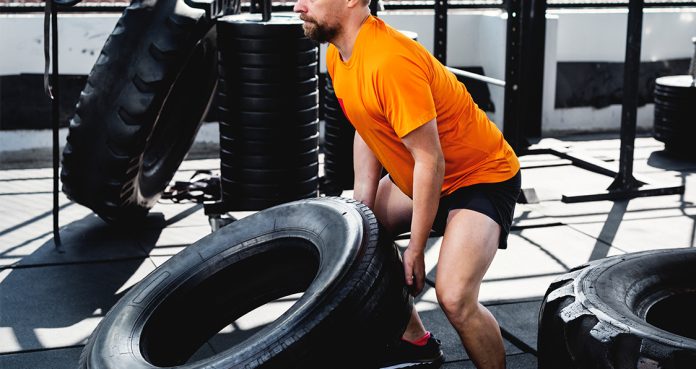
Gym Hacks and Tricks for Bigger and Stronger Muscles
Get Bigger and Stronger With These Gym Hacks
If you’re like most people, you weight train to get stronger and muscular. Sticking to the vanilla training techniques might work in the long run but why stick to the slower path when you can speed up the progress by making a few tweaks in your training?
As you incorporate the hacks in your workouts, you’ll feel an instant effect on your muscles. With the tips mentioned in the article, you can train smarter and make your workouts more effective.
Use Fat Grips
Fat grips can add to the bar width which can make it harder to hold. The difficulty in holding onto the bar recruits your forearms which can spark arm development. Although most people use the fat grip for their arm workouts, you can throw them onto the bar in almost every bar exercise like the bench press, rows, side lateral raises, etc.
A thicker bar can result in an even distribution of pressure throughout your palm which could mean lower stress on joints like the shoulders and elbows. You’ll have no choice but to acknowledge the pump using thicker grips has on your muscles.
Tweak Your Deadlifts
If you’re tall or have longer legs, deadlifting with the orthodox stance might not be the most effective technique for you. While training, you need to remember there is no “one technique fits all”. You need to experiment with the form until you find the one which works the best for you.
A tall person has to bend more as compared to a shorter guy while deadlifting. For people with longer legs, a normal deadlift might feel like what deficit deadlifts are for average height people. Performing sumo squats or using a trap bar is a better alternative for the normal deadlifts for tall people. The two variations of the deadlift are also great for people with lower back problems.
Go Beyond Failure Every Day
Most people misunderstand the concept of “overtraining” and don’t push the boundaries when it comes to training to failure. If a person is overtrained, his nervous system breakdowns, and he’ll have problems recovering from workouts or an illness.
Most people will never be able to reach the “overtrained” state even if they wanted to. While hitting failure in every workout is important, you don’t need to do so in every working set. You can train to failure in the last set of an exercise. So you’ll be hitting failure in five sets if you’re performing five different exercises in a chest workout.
Perform Pin Presses
Pin presses are one of the most effective and yet underutilized training techniques. People with shoulder rotator problem or stiff shoulder blades will have a problem in performing the compound pressing movements like bench press, military presses, etc.
Performing pin presses can reduce the tension on your joints as you can limit the range of motion to your liking. Pin presses can also help you lift heavier weights without the risk of an injury. You can also perform the pin presses on the leg exercises like barbell squats.
When in Doubt, Go Heavy
If you are a weight room regular, chances are that you regularly find yourself in a position where you don’t know how much weight to lift. In such a situation, most people make the mistake of using lighter weights in their first set.
Using weights that are too easy to lift can mean you have wasted your first set. You should always go for the challenging (read intimidating) weight. If you fail to perform the exercise with heavier weights only then you should drop down the weight. In case your first set was too easy, consider the set to be a warm-up and have a go at it again with heavier weights.
Have you ever tried pin presses in your workouts? Let us know in the comments below. Also, be sure to follow Generation Iron on Facebook and Twitter.

5 Ways To Lose Fat Without Losing Muscle
How To Shed Weight Without Losing Muscle
Most people, especially the experienced lifters, are paranoid to shed their winter weight because they think it’ll result in a loss of muscle. On the other hand, some people always end up skinny, or worse, skinny fat when they try to lose fat.
You don’t have to be a physicist to figure out that if you can lose fat while keeping your muscle mass, you’ll look great. Since the summer is right around the corner, we’re here to bust the fat loss myths and tell you how you can achieve the almost-impossible feat of losing weight without losing muscle.
Use Heavy Weights
This is a big one. If we got a dollar for every time we heard someone say that lifting lighter weights and performing a higher number of reps help you lose weight, we’d be throwing parties as big as Dan Bilzerian.
A study conducted by the Obesity Research Center proves that strength training significantly reduced the loss of FFM (fat-free mass) i.e. muscle during dieting. If your body thinks that it doesn’t need the extra muscles, it starts using them as a source of fuel. Lifting heavy weights is the most effective way of holding onto your muscle mass.
Lower Training Volume & Frequency
When most people decide that they want to shed the extra kilos, they become obsessed. They start spending long hours in the gym. And when they’re not training, they’re day-dreaming about it.
You should prefer a 3-4 day training split. This will allow you to work out on non-consecutive days whilst also not training the same muscle groups within 48-72 hours of the previous workout. Anything more than this will push you into a catabolic state.
Don’t Use More Than a Moderate Calorie Deficit
It’s not unnatural that people think about cutting their diet when they plan to lose excess weight. The more calories you cut from your weights, the more weight you’ll use. In the hopes of achieving more in a shorter period, people overdo the calorie reduction.
Your calorie cut should be moderate (20 – 25% below maintenance calories) at the most. It’ll ensure that you don’t start losing weight faster than the recommended rate of 1-2 lbs per week.
Fill-Up On Protein
Protein is a macronutrient and is the building block of muscle mass. Your protein intake should be higher when eating a calorie deficit diet to help preserve muscle mass than when eating at maintenance or in a calorie surplus.
You should consume 0.6-1 grams of protein per pound of bodyweight if your goal is to build or maintain muscle mass. Stick closer to 1 gram when eating in a calorie deficit and closer to 0.6 grams when on a calorie surplus diet.
Take it Easy on the Cardio
Lastly, for the love of God, stop with the cardio obsession. Truth be told you can get lean without doing any cardio at all. If you’re following a calorie deficit diet, you’ll be losing weight regardless of if you’re doing cardio.
Since your goal is to lose weight without dropping your muscle gains, you should be doing 10-minute HIIT (high-intensity interval training) sessions for your cardio. Anything more than this will be an overkill.
Are you planning to lose weight? Let us know in the comments below. Also, be sure to follow Generation Iron on Facebook and Twitter.
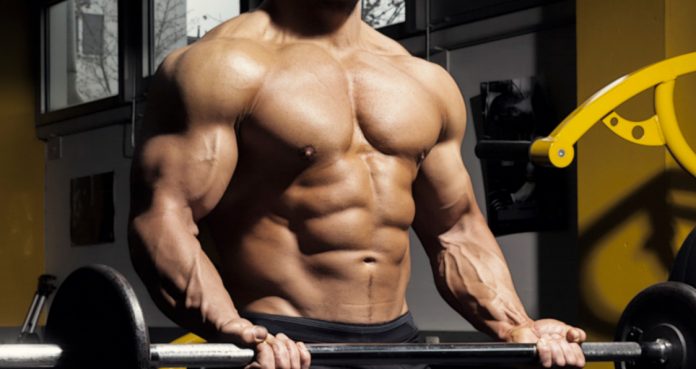
This is Why Bodybuilders Are More Jacked Than CrossFitters
Why Bodybuilders Are More Jacked Than CrossFitters
Comparing athletes from different backgrounds has become a standard, especially after the MMA athletes have started stepping into the boxing rings with their gloves on. The Connor McGregor and Floyd Mayweather fight have started a trend which is going to go on for a long time.
Bodybuilders and CrossFitters are no strangers to this comparison. Athletes from these backgrounds are compared to judge which is the better sport. Beginners make the comparison to choose between which sport they should opt for.
The Goal
While bodybuilders train to craft their physiques by building muscle mass and symmetry, CrossFitter’s workout to get fitter. The end goal of both these sports should be evident from the fact that bodybuilding shows determine the best physique on stage and the CrossFit games are meant to discover the fittest man and woman.
In a bodybuilding show, athletes are marked for the mass, symmetry, and conditioning of their muscles. In a CrossFit game, the athletes compete and have to outdo each other in the workouts.
Training
The bodybuilders train for breaking their muscle tissues and are always chasing the pump. Bodybuilders usually follow a training split and will have a set duration of rest time between working sets.
CrossFit athletes, on the other hand, follow a WOD (workout of the day) which is often a circuit which targets building strength and stamina. CrossFitters also do group workouts where a large number of people perform the same workout as a “class”.
Use of Machines
Bodybuilders use machines in their workouts to include variations and isolate their muscles. Most bodybuilding gyms are filled with numerous machines to add variety to the workouts and shock the muscles into growing.
CrossFit gyms are bare bone as compared to the bodybuilding gyms. The CrossFitters rely on functional movements in their training which usually include barbell, dumbbell, kettlebells, and pull-ups bars and don’t use a lot of machines.
Nutrition
It is no secret bodybuilders love protein. Bodybuilders follow a diet plan along with their training program. The bodybuilders also use supplements (now a billion dollar industry) to assist with their goals.
While the CrossFit athletes train to become the fittest individuals, their diet plans can be vastly different than that of the bodybuilders. The CrossFitters don’t usually use pre and post-workout supplements.
Advanced Training Techniques
The bodybuilders use advanced training techniques like drop sets, supersets, intraset stretching, BFR (blood flow restriction) training to shock their muscles and fill them up with blood and lactic acid. The bodybuilders will often train to muscle failure in their sets.
CrossFit athletes don’t train to exhaust their muscles and don’t use advanced training techniques. CrossFitters don’t usually target a specific muscle group like biceps or chest and will rather follow a full body workout.
Are you a bodybuilder or a CrossFitter? Let us know in the comments below. Also, be sure to follow Generation Iron on Facebook and Twitter.
*Header image courtesy of Envato Elements
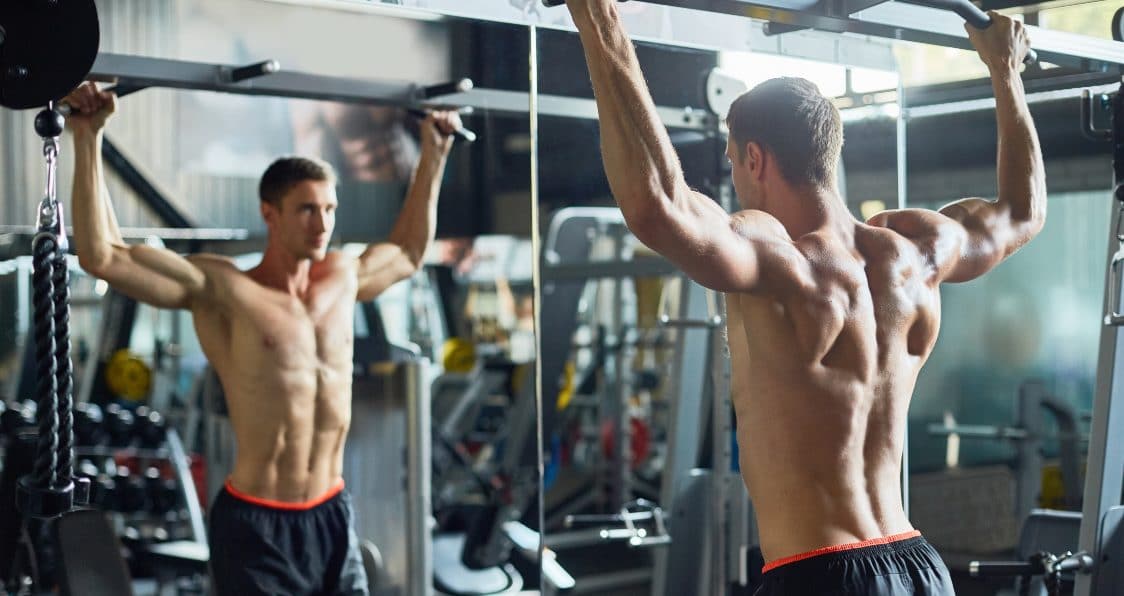
Should You Follow Someone Else’s Training Plan, Or Is Your Own Better?
A training plan is just a training plan, right?
Those of us who take our training plan seriously know how hard it can be to actually formulate and design an effective one. There are so many exercises out there and it can be extremely difficult to pick and choose which exercises are best for growth. At the end of the day, an exercise is just an exercise, right?
While there is of course truth to this, and truth that all exercises will help produce gains, there is something to be said about finding those exercises that are right for you. An effective training plan consists of workouts that you respond to. On top of that, constantly changing up your workouts is important as you look to get the most out of each and every training session.
But what happens if you use the training plan of a friend. We did already say that exercises are just exercises at the end of the day. So, can you use the training plan of a friend to see great gains? A better question may actually be, is it smart to use the training plan of a friend to see gains?
There is of course back and forth debate on this, but let’s jump into this question and see why it might be or might not be the best plan of attack for you. While there are benefits to both sorts of training plans, we’ll let you decide for yourself.
Benefits Of Your Training Plan
A training plan that is individualized for you can be extremely helpful in the long run for it is literally made for you. Not all workouts are one size fits all and there are certain exercises that some people may respond to better. Plus, a training plan for you can be geared towards and specifically designed to tackle certain needs you may have.
Let’s think about it like this. If you are a runner training for a marathon, you wouldn’t use someone else’s training plan who is working towards a sprint race. It sounds simple enough, but when it comes to lifting, someone else’s training plan may be geared towards a powerlifter or for them preparing for a competition, while maybe you are looking to shred and tone. Different strokes for different folks.
Ultimately, a training plan designed for you allows you to customize and specifically design your exercises around your certain needs.
Benefits Of Someone Else’s Training Plan
Using someone else’s training plan, however, may introduce you to other exercises you hadn’t thought about before. Often times we get stuck performing the same exercises over and over again and that can ultimately hurt our gains. What you will find by using someone else’s plan is that you can experiment and see what kind of results these exercises will yield before taking the time to pencil them into your plan.
Also, you can work for some muscle confusion. Performing different exercises allows you to work those muscles differently and see better gains to ultimately lead to increased muscle growth. With someone else’s training plan, you can better work to create that muscle confusion to see the best gains possible.
How Best To Create Your Own Training Plan
Creating a training plan can be challenging, and may even be daunting, for you want it to be as perfect as possible. However, it is important that you consider certain elements to best make your plan as effective as possible.
Focus Of Each Day
The focus of each day is important for this determines what exercises are placed on which day. A great example of this comes from Jeff Nippard and his Push, Pull, Legs workout plan. By prioritizing muscles that push, muscles that pull, and then his legs, he has created a great plan with a clear goal for each training session.
Sets & Reps
Looking at your sets and reps is huge and will pay off in the long run depending on your goals. Higher sets with lower reps will work to increase muscle and size while something like higher sets and higher reps will increase muscular endurance with lighter weight. This ultimately comes down to you and how you feel about those intended goals.
With so much equipment at the gym to choose from, determining if you want to use free weights or machines is incredibly important and can prove to pay off in the long run. A healthy mix of both will produce the best gains and allow you take advantage of great workouts, including things like pull-ups, the bench press, and of course, the mighty deadlift.
Length Of The Session
The length of the session is important because our schedules tend to be very busy. When putting together your plan, what you will find is that the length of your session must reflect what you can handle with your daily schedule. If you can spare 90 minutes to 2 hours, then go for it. If you can only do 45 minutes to 1 hour, then make sure your plan fits that timeline.
One thing many people don’t do is create time for recovery in their training plan. The exercises are great but making sure you target recovery time will alleviate unwanted soreness while also leading to more growth, thus making sure that valuable time in the gym is not wasted.
Wrap Up
Putting together a training plan for yourself is the best way to go when compared to using someone else’s. What you will find is a specifically targeted plan for you that is working for your specific goals. Someone else’s plan, while it can give you certain insights, isn’t the best course of action for this can be too flexible and not specifically target your immediate goals. Take some of these tips above when looking to form your own plan and see what can happen when you create a plan specifically designed for you.
Let us know what you think in the comments below. Also, be sure to follow Generation Iron on Facebook, Twitter, and Instagram.
*Images courtesy of Envato
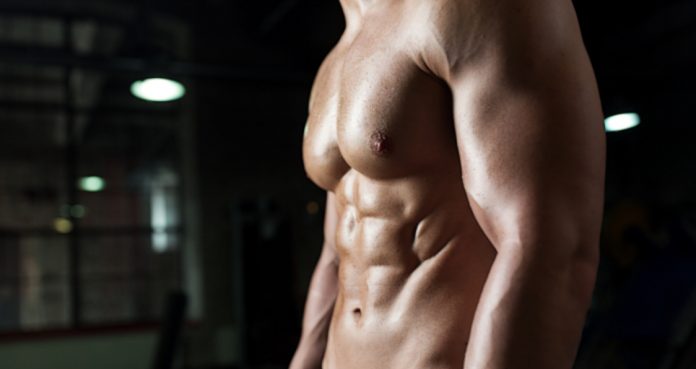
Build Six-Pack Abs at Home With This Workout
Ab Workout You Can Do at Your Home
The desire for obtaining a chiseled midriff is what gets many people to join a gym. What most people don’t realize is you don’t need to get a gym membership to build a six-pack. You can get the midsection of your dreams from the comfort of your home.
While many people train their core at home, a majority of them make the mistake of sticking to the good old crunches. You need to have a variety of exercises in your ab workouts to train your midriff from all angles.
Leg Raises – 3 Sets 15 Reps
In this workout, we won’t leave any stones unturned. We will focus on the upper and lower abs along with the obliques. If you have a hard and sturdy elevated surface at your home, perform the bench leg raises.
Otherwise, you can perform the floor leg raises. While performing the leg raises, make sure your knees are bent at a slight angle and hold the position throughout the exercise. You can also perform the hanging leg raises if you have access to a hanging bar.
Feet Elevated Crunches – 3 Sets 20 Reps
Feet elevated crunches are a variation to the normal floor crunches. In the feet elevated crunches, you can better isolate your upper abs. Lie down with your back placed on the floor and place your lower legs on an elevated surface like a bed or chair.
Your upper legs should be perpendicular to the floor and your hands placed at the sides of your head. Raise your upper body by pushing your lower back into the floor and squeeze your abs at the top of the movement as you exhale. Return to the starting position and repeat for the recommended reps.
Russian Twists – 3 Sets 15 Reps (Each Side)
A midriff can’t be deemed complete without well-carved obliques. Obliques are the fish gill-like muscles present at the sides of your abs. Most people overlook training their obliques and hence lack the definition in their mid-sections.
Sit on the floor with your knees bent so your feet are placed flat on the floor. Lean back your upper body so it forms a 60-degree angle with the floor. Extend your arms straight forward so your hands are above your knees. As you exhale, turn to your right side by twisting your torso. Return to the starting position and repeat on the left side.
Reverse Crunches – 3 Sets 20 Reps
Reverse crunches are the exact opposite of the orthodox crunches. While the crunches work the upper abs, the reverse crunches train the lower abs. Lie down with your back on the floor and place your arms at your sides.
Bend at your knees so only your heels are touching the floor. As you raise your legs, breathe in and bend your knees so that your upper legs touch your torso at the top of the movement. Return to the starting position while breathing out.
Heel Touches – 3 Sets 20 Reps Each Side
Training for toned sides can be detrimental in building a perfectly crafted midriff. The heel touches are one of the easiest exercises on this list. Lie down with your back on the floor and place your arms at your sides.
Bend at your knees so your feet are placed flat on the floor. Lift your head off the floor so that there is tension on your upper abs. Crunch at your ride side to touch your right feet. Return to the starting position and repeat on the left side.
Planks – 3 Sets 2 Minutes
Planks are an incredibly effective core strengthing exercise. Performing the planks are must for anyone who wants to train at home. A strong core not only makes your abs rock hard but also helps in performing compound movements by improving and strengthening your body stabilizers.
Get into a prone position on the floor, supporting your weight on your toes and your forearms. Bend your arms so that your elbows are directly below your shoulders and your forearms are parallel to each other. Your body should remain in a straight line throughout the exercise. Don’t let your hips sack down or form a bridge to take off the tension from your abs.
Which is your favorite exercise to perform at home? Let us know in the comments below. Also, be sure to follow Generation Iron on Facebook and Twitter.
*Header image courtesy of Envato Elements
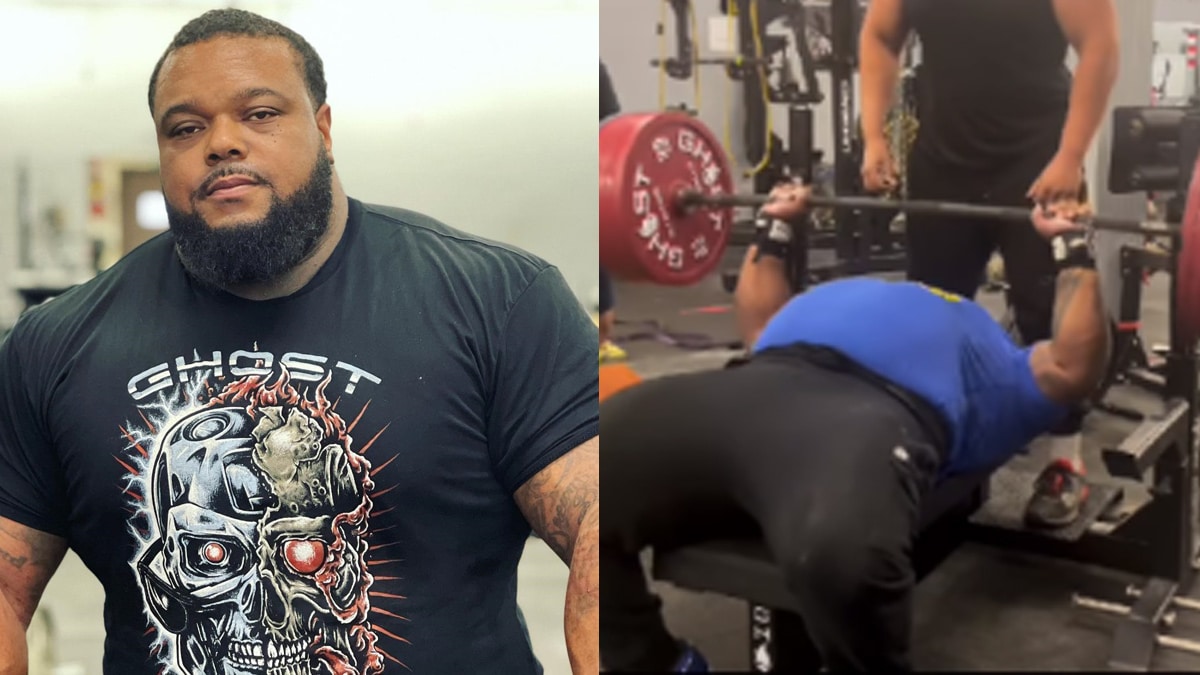
Powerlifter Julius Maddox Smokes 735 lbs (333.4 kg) Raw Bench Press In Training
Julius Maddox wants to become the first person to bench press 800 lbs in a competition, and thus further improve his world record. He took some time off to rest, but now he is back to training and looks fantastic. On March 28th, Julius posted a 735 lbs (333.4 lbs) bench press video to his…
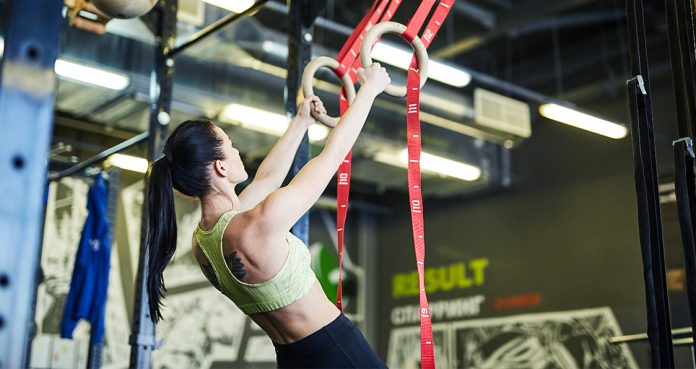
7 Changes Everyone Should Make To Their Training Programs – Today
Changes You Need To Make Your Workout Plan Today
Believing that their training program is foolproof is one of the biggest reasons why people don’t see the results they have been hoping for. You should constantly be making adjustments to your training program to keep your muscles guessing.
You could make all these changes at once or a couple of them at regular intervals. If you have hit a plateau or aren’t growing as fast or as big as you would like, you need to make these modifications to your training program.
Intensity
Intensity includes but is not limited to the number of repetitions. You should constantly change the number of sets, rest times, and weights to shock your muscles into growing. If you don’t break a sweat throughout your workout – you’re doing it wrong.
You have to get outside your comfort zone to see favorable changes in your physique. Sticking to the vanilla training program where you perform 12-8 reps and 3 sets of an exercise isn’t going to get you anywhere.
Advanced Training Principles
Bringing a new dimension to your workouts by using advanced training principles like super-sets, dropsets, intraset stretching, blood flow restriction (BFR) can take your gains to a new level.
Your muscles grow bigger and stronger when they are put under unfamiliar stress. The advanced training techniques can be the stimuli required to spark new growth. Using some of these techniques correctly requires you to be on an advanced level.
Adding What You’ve Been Avoiding
Almost everyone has something they have been putting off for the longest time. It could be cardio, squats, HIIT circuit training, etc. Making these things a part of your routine can ignite positive change.
Most people tend to avoid certain things because they find them hard. After you add them to your workouts, you might realize that it was all your body needed and you had been avoiding them for a reason.
Rep Speed
Tweaking the rep speed is one of the most underutilized ways of getting the most out of your workouts. There are a million combinations of how you could change the rep speed to constantly shock your muscles.
You can change the amount of time you take on the concentric (upward) and eccentric (downward) movements, and on the pause at the top and bottom of the lift. An example of this would be 5-1-1-2, i.e. five seconds on the eccentric movement, a second’s pause at the bottom, one second on the concentric motion, and a two-second contraction at the top.
Experimenting With A Training Partner
Training with a buddy can increase your input and output. You might be able to lift heavier weights and do more reps with a spotter. You also greatly reduce the chances of an injury while performing compound lifts.
On the flip side, training with a partner isn’t for everyone. If your partner has a big mouth, bad personal hygiene or isn’t an experienced lifter, they can turn into a liability rather than an asset.
Complete Reprograming
Sometimes it’s better to take a complete re-route. If you have been following a bodybuilding program for a long time, you could try doing a CrossFit, strongman or weightlifter’s training routine.
You could also try a new – but proven – workout program like Y3T, DTP, PH3, etc. You’ll have to put in the time to learn about the different training programs and understand which one is the best for you.
Training Time
By training time, we don’t mean the workout duration. If everything else fails, your best bet would be to change the time of the day you hit the gym at. If you previously worked out at 5 pm in the evening, you should experiment with training at 9 am.
Why so? We’re glad you asked. Sometimes your body doesn’t respond to your workouts because your eating and recovery routine doesn’t fit in well with your training time. Spacing your training, diet and recovery programs well is key to a successful transformation.
How often do you make changes to your training program? Let us know in the comments below. Also, be sure to follow Generation Iron on Facebook and Twitter.

